Dr Scofflaw
Binary Star #3, Dell Publishing Co., Inc., 1979. ISBN: 0-440-10526-9
Featuring two great novellas in a single volume:
- Dr. Scofflaw, by Ron Goulart
- Outerworld, by Isidore Haiblum
I only read Dr. Scofflaw, apparently in 1979, and again 45 years later, in 2024.
This is a strange little book. It’s got two rapidly written, 150-page stories in it. Each story has 5 shoddy illustrations apiece, all by James Odbert.
I don’t remember Dr. Scofflaw, so re-reading it was like reading a new book, albeit one from an author that does not experiment much with style, characters, or even setting.
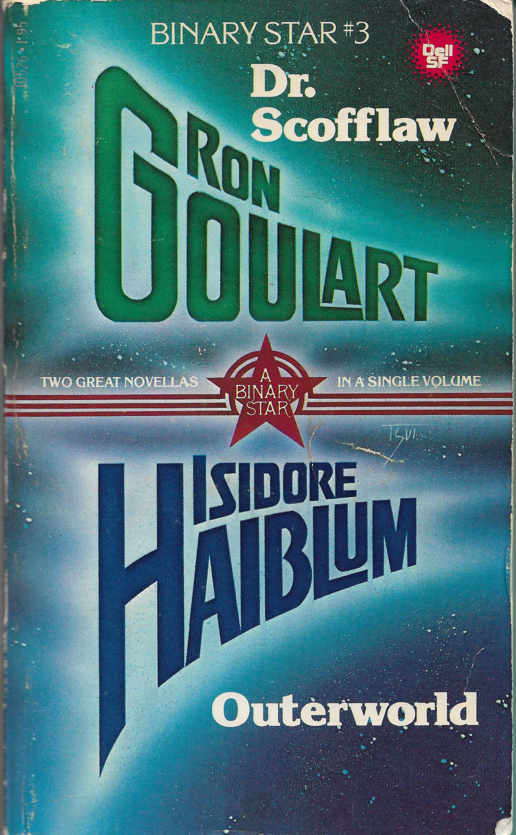
Dr. Scofflaw the story follows one of Goulart’s stock characters, large, well-muscled Jose Silvera. Silvera is an incredibly prolific ghost writer who always collects his fees. Dr Scofflaw the character owes Silvera $10,000, and all the conflict in the story derives from Silvera working to collect the money.
The Doctor as a whole never makes an appearance. This isn’t one of those Moby Dick situations where the title character is notable for their absence for most of the book, or even one of those books where a character is an allegory for a force of nature or something. Nay, Dr Scofflaw not only isn’t the protagonist, he isn’t even the antagonist. We only see Dr Scofflaw’s lower left leg.
Goulart’s work has a lot of attempted humor in it. The planets in his sci fi have goofy names like “Barnum” or “Murdstone”. Dr. Scofflaw takes place on “Barafunda”. A lot of the characters are hopelessly eccentric, like the breast fetishist photographer Palma. A good deal of the humor derives from Silvera re-directing the odder characters’ verbal eccentricities without acknowledging the eccentricity. There’s the usual sci fi dodge of making a place “alien” by having animals with odd names, like “grout”. Grouts in this book are rideable by humans, or human-sized aliens, but are never described.
Illustrations
Cheap paperbacks weren’t printed on acid-free paper in 1979. My copy of Binary Star #3 has yellowed in the last 45 years. 45 years, dear god.
It must have been hard for James Odbert to illustrate Goulart’s text. Although his characters have interesting names, they’re barely described, perhaps given a gender and a color, as in “stunning, green-skinned authoress”, or maybe sketching something making the character into an alien, like “dog-headed author”, or “hefty toadman”.
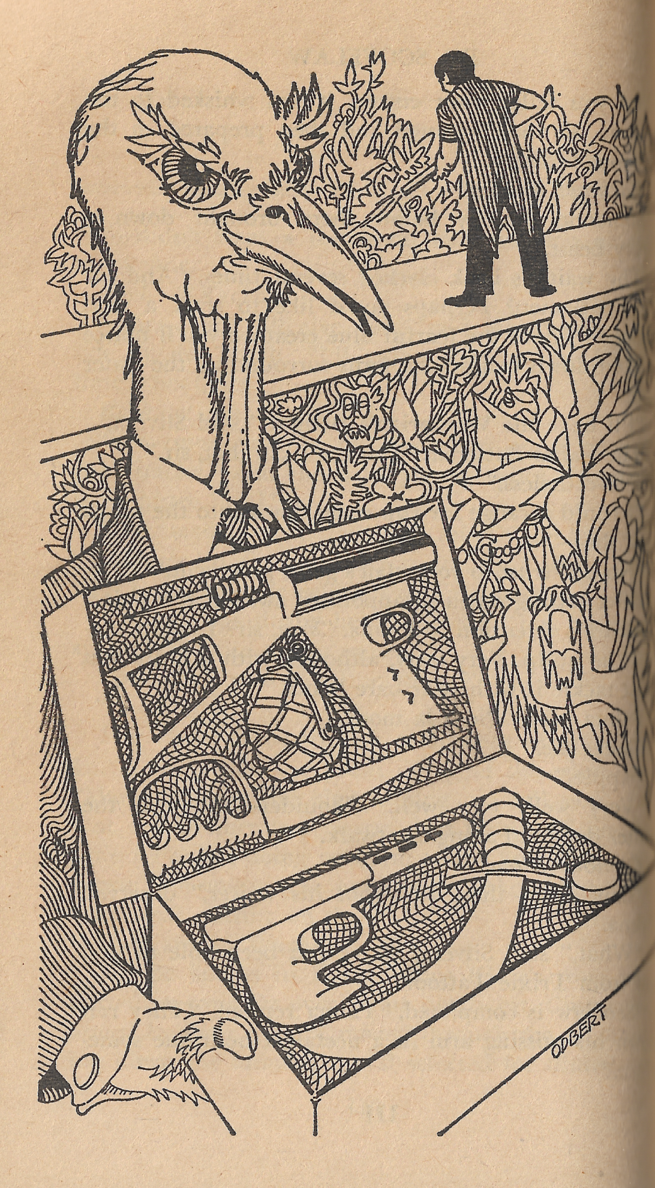
That’s the waiter at a shoot-it-yourself restaurant, “Karnivorous Klute’s”. You can tell the waiter is some kind of alien because he has the head of a bird. Odbert gave it the old college try.
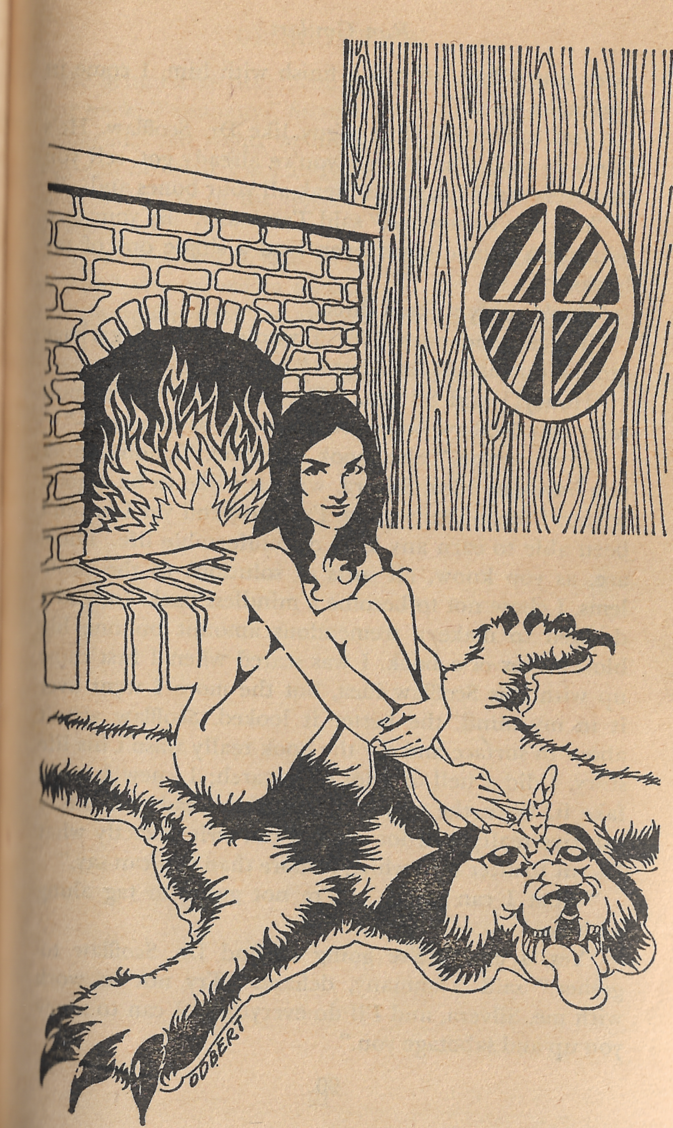
Above, major character Tammany Kloister, posed fetchingly on a groutskin rug. This seems like some repurposed soft-core porn Odbert had lying around. Goulart’s writing does not have Kloister unclothed. The scene with the groutskin rug wouldn’t make sense if Kloister was unclothed.
I’d sum up Odbert’s efforts as of journeyman quality. He’s clearly learned some craft, has some illustrative skill, but has not mastered this kind of graphic art.
The illustration’s qualities add to the “slapped together in a hurry” vibe given off by Binary Star #3.
Author pictures, 1979!
Wow, these are really 70s. Or maybe the book was put together in panicked hurry, and they used whatever cheesy pictures they currently had in their files. It was 1979, we did not have fax machines, much less email, so postal mailing actual photographs was probably the fastest way to get documents around, and publishers kept all kinds of paper artifacts in actual filing cabinets.
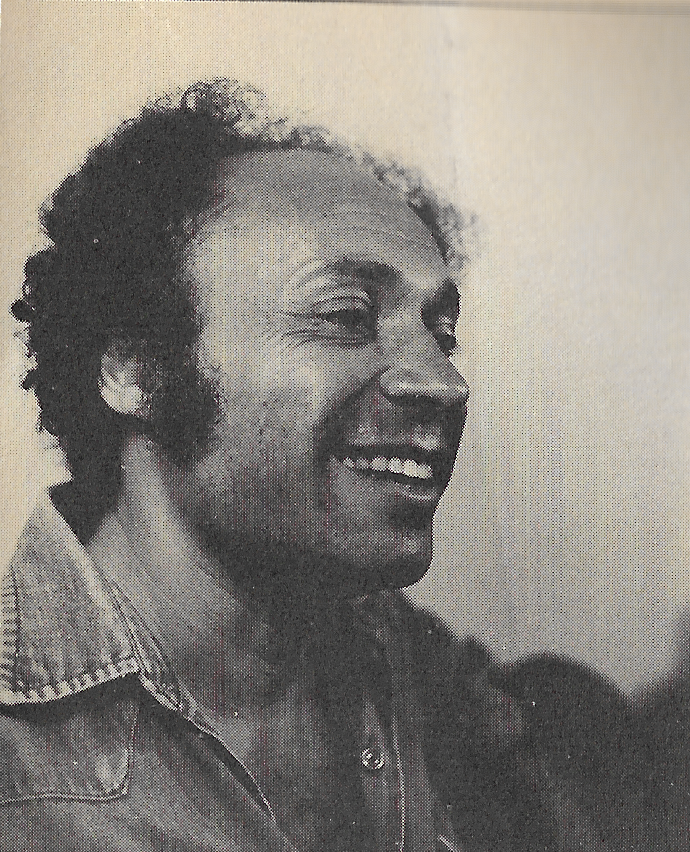
That’s Mr Haiblum. I did not read Outerworld, and I haven’t read any of Haiblum’s other books, but his obituary makes him sound like an interesting character. He wrote something like 17 other novels.

Above, Ron Goulart. I have read a number of Goulart books. At one point I owned a copy of Clockwork’s Pirates. I suspect that I bought Binary Star #3 because of other Goulart books I’d read.
Binary Star books
Dell Binary Star books date to 1978, the first one was Destiny Time Three, Fritz Leiber, and Riding the Torch by Norman Spinrad. Reading a review of Riding the Torch, I think I’ve read it too, but even though the title “Riding the Torch” rings a bell, I remember the story itself having the title “The Voidsucker’s Tale”. Apparently my memory scrambles over time.
Special Bonus
I found a small paper receipt in the pages of Binary Star #3. I’ve been sticking receipts for the purchase of books in their pages for years, which results in cool experiences in inflation.
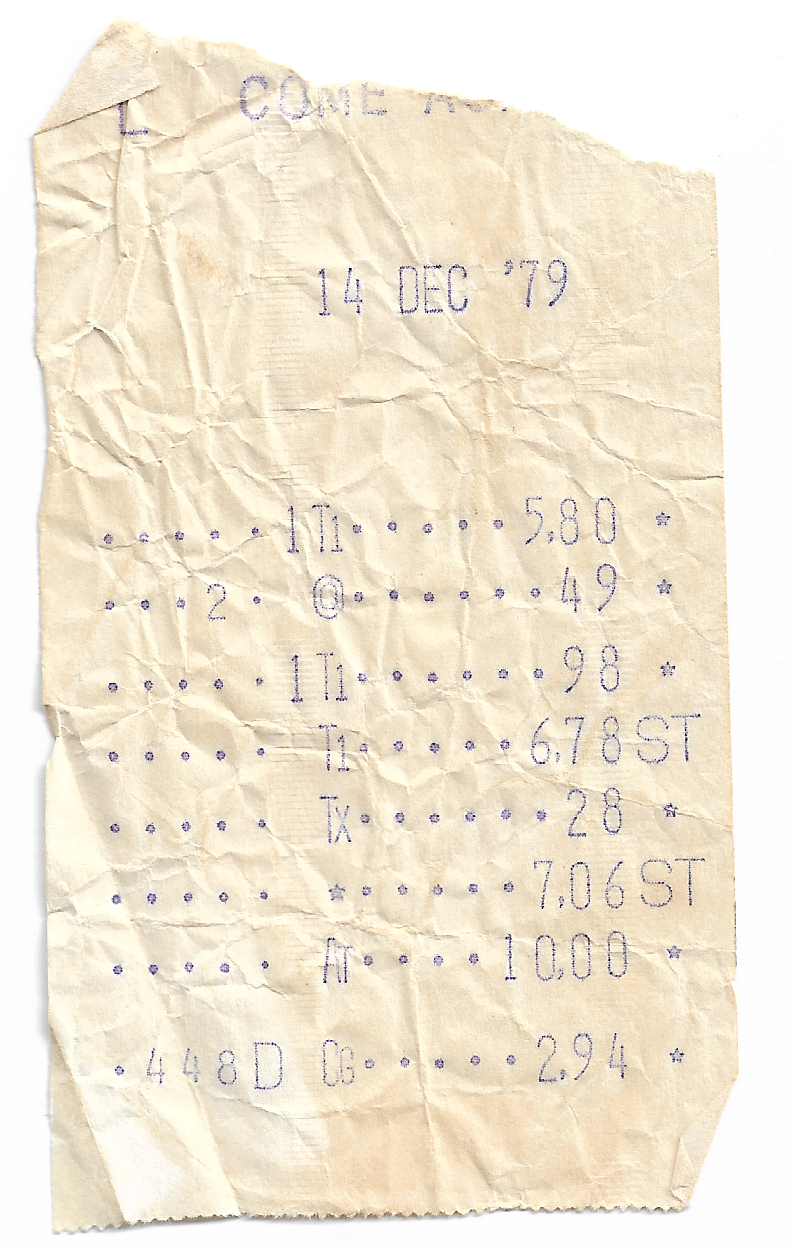
I bought something that cost $5.80 and two things that cost 49 cents each. Tax on $6.78 of merchandise was 28 cents, or 4.1%, which seems pretty low. I have no recollection of what these items were, where or why I bought them. Apparently the store was happy for my business, wishing that I would COME AGAIN. This is not the receipt for Binary Star #3. My copy’s cover price is $1.95
Cash registers do a lot more these days. A paper receipt today would almost certainly list at least a general category for the items purchased, like “book”, “food” or “hardware”. Without full-featured cash registers, the categories and numbers of sales taxes we impose in 2024 would be onerous to do. For example, Cith of Denver does not have sales tax on unprepared food, but it does tax prepared foods. Back in 1979, the cashier probably looked up the sales tax on a laminated paper table that changed at most once a quarter.
